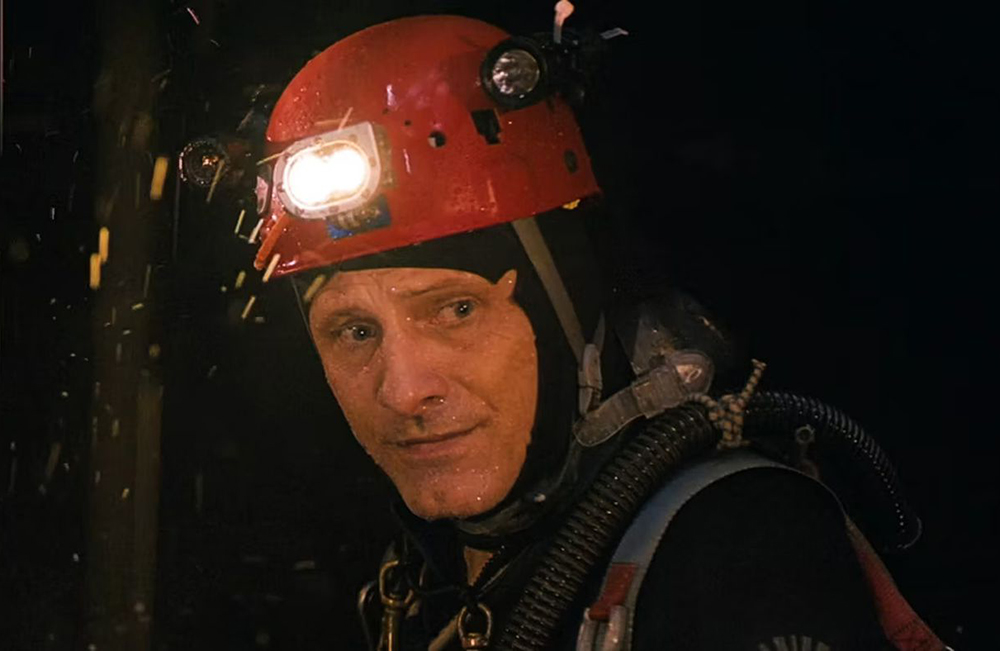Ron Howard’s “Thirteen Lives” has incredible underwater sequences that are equally thrilling and cinematic. However, it contains shoddy writing and psychological insight into the heroic divers’ mindset.
Although most of his latest work has been misses more than hits, Ron Howard is a better filmmaker than you might imagine. Sure, he may have a tendency towards the “Oscar-bait” dramatic portrayal when it comes to his drama-feature affairs so that there is a bit of “punch”. Still, there’s some directorial and cinematic value to most of them (sorry, “Hillbilly Elegy”). There are flashes of brilliance in his most ponderous outings. Films like “Apollo 13,” “Frost/Nixon,” and “Rush” demonstrate that Howard knows how to set up and concoct a well-constructed drama. He began by bringing us the charming lightness of “Splash” and “Parenthood,” later transitioning onto true-life stories, both features and documentaries, that might catch the audience’s eyes. Because of such a predicament, only one person could have made the rescue of the Thai kids’ football team into a feature narrative. And that person would be Ron Howard.
First Came ‘The Rescue,’ now Comes ‘Thirteen Lives’
It hasn’t been a year since Jimmy Chin, and Elizabeth Chai Vasarhelyi released their pulsating documentary on the subject, “The Rescue” (which had exhilarating reenactments of the rescue). And now, Howard has made a feature film about it, titled “Thirteen Lives,” as in the thirteen people trapped in the cave. That has happened in the past with other documentaries, but this one is a bit different because of its topics. First, if Howard was going to continue with this project, he needed to get rid of the Hollywood adornments. What I mean by that is the almost unavoidable aspect of “white savior-ism” — a thing that happens in many of these international based-on-true-events features. Nonetheless, Howard knew that would be a problem. He decided to tackle it by making sure the performances by the leads (Viggo Mortensen, Joel Edgerton, and Colin Farrell) weren’t extravagant, melodramatic, or contained Oscar-bait scenes.

Instead, he has them react in a more humanistic and grounded manner, without excessiveness or exaggeration. Also, it showcases more of the Thai divers and crew’s heroism than “The Rescue” did. However, it doesn’t give them enough big moments to resound more than they need to. Yet, that’s the writers’ fault, as all the characters are underdeveloped and rudimentary. Ron Howard’s latest re-stages the rescue of the Thai youth football team trapped in a network of caves rapidly filling up with water that happened during June and July of 2018. It has a documentary-esque feeling, which works with and against it, mainly for the latter. The reason why is it feels like it wants to recapture the feeling last year’s documentary delivered upon its viewers. Its almost journalistic approach lowers its cinematic sensibilities. It makes the topic’s transition from documentary to 147-minute full-length feature far less exciting and uninspiring.
More Focus on Details Rather than the Mindset of the Heroes
In addition, since it focuses on statistics and reportorial details, the characters aren’t fully developed. The writing teams seem more interested in developing all the story’s details, except Elon Musk’s dicey involvement, and not dwelling in the psyche of these real-life heroes. That approach works in its favor because it doesn’t dwell on Hollywood glamor and stylization. It instead focuses on telling a proper story.
Unfortunately, the manner in which it tells such a tale that happened not long ago is not enthralling or escalating enough for everyone to be enamored with it. “Thirteen Lives” is at its most thrilling and engaging when it deals with the underwater sequences. Howard has a panache for creating tense scenes in true-to-life and claustrophobic situations, like in “Apollo 13.” And in his latest, he manages to do so effectively. Cinematographer Sayombhu Mukdeeprom perfectly pulls the audience onto the muddy terrains of the echoed and profound cave. The camera lingers for the right amount of time to ensure audiences feel the pressure and tension of the situation.
Of course, those who have read about the incident already know its outcome. Nonetheless, I can see people who don’t know about it being entirely on edge during these sequences because of how well-shot and directed they are. Ron Howard manages to capture those rescue scenes as thrilling popcorn sequences. This is where his talents truly shine and are seen constructively. Because, for the most part, one cannot see the fear in each of the divers’ faces, the cinematographer and editor must find ways to capture that sensation of anxiety and apprehension.
Finding Ways to Capture the Tension and Anxiety
Because of that, Mukdeeprom and editor James Wilcox use tight framing and finely tuned edits as a set-point to depict that sensation as the camera goes beyond the cave’s depths. You stay for the cinematic underwater sequences and Viggo Mortensen splashing around in a wetsuit, but the rest flounders because of its direction, poor writing, and lack of psychological insight. Although “Thirteen Lives” isn’t up to par with Ron Howard’s Oscar-bait material, at least this is better than his Netflix adaptation of J. D. Vance’s novel.
“Thirteen Lives” is currently available to watch on Amazon Prime.
Support the Site: Consider becoming a sponsor to unlock exclusive, member-only content and help support The Movie Buff!